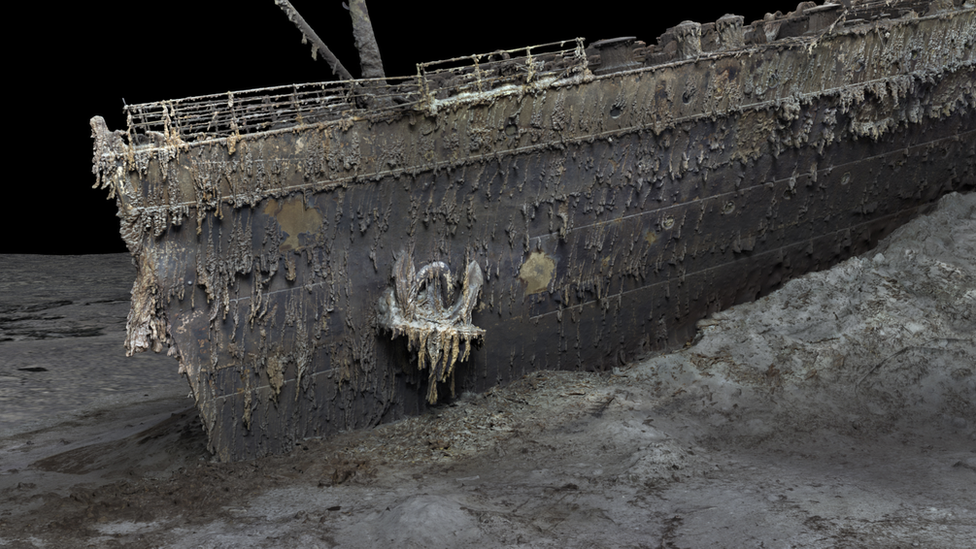Titanic tourist submersible: Rescuers scan ocean as clock ticks
- Published
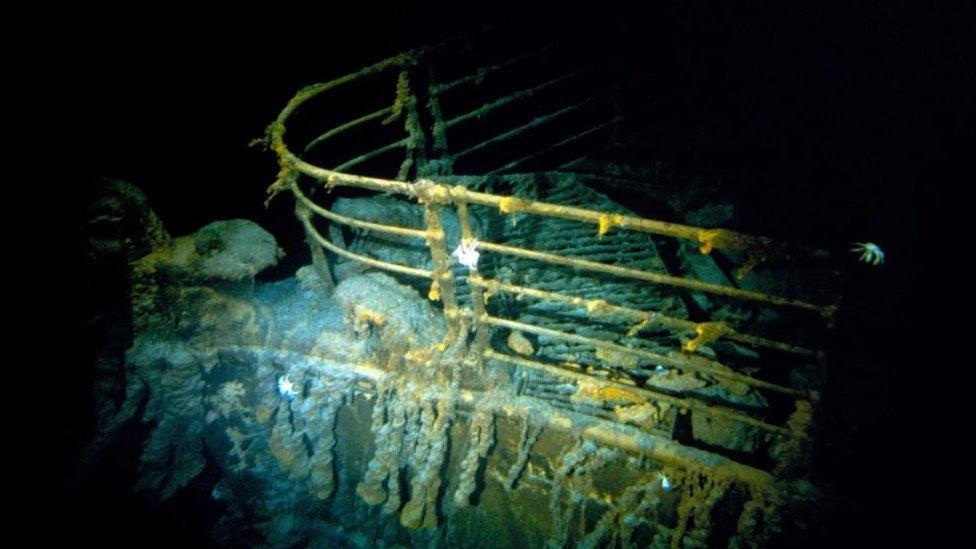
The Titanic sits 3,800m (12,500ft) down at the bottom of the Atlantic (file image)
Search teams are racing against time to find a submersible that went missing during a dive to the Titanic's wreck.
Five people were on board when contact with the small tourist sub was lost about an hour and 45 minutes into its dive on Sunday.
There was about 40 hours of oxygen left in the sub as of 13:00 EST (18:00 BST) on Tuesday, the US Coast Guard said.
The rescue operation has expanded into deeper waters in the mid-Atlantic, but so far, nothing has been found.
The five people on board are British businessman Hamish Harding, British-Pakistani businessman Shahzada Dawood and his son Suleman, French explorer Paul-Henry Nargeolet and Stockton Rush - the chief executive of OceanGate, the firm behind the dive.
Speaking at a news conference on Tuesday afternoon, Capt Jamie Frederick of the US Coast Guard said crews were "working around the clock" to find the sub, but so far, the search had "not yielded any results".
He added it was a "very complex search" across an "enormous amount of distance".
US and Canadian agencies, navies and commercial deep-sea firms are all helping the rescue operation, using military planes, a submarine and sonar buoys. Several private vessels are assisting.
A commercial pipe-laying ship, Deep Energy, with remote submersibles has also arrived at the site.
Oceanographer and world-renowned shipwreck hunter, David Mearns, told the BBC that he was hopeful Deep Energy's subs could reach the 3,800m (12,500ft) depth of the Titanic wreck to search for the missing vehicle.
Mr Mearns knows two of the passengers on board personally - Mr Harding, 58, and Mr Nargeolet, 77.
Mr Harding is a renowned explorer who has flown to space and holds three Guinness World Records. At the weekend, he said he was "proud to finally announce", external that he was part of the mission.
Mr Nargeolet is a former French navy officer and diver, and also director of underwater research at a company that owns the salvage rights to the Titanic wreck.
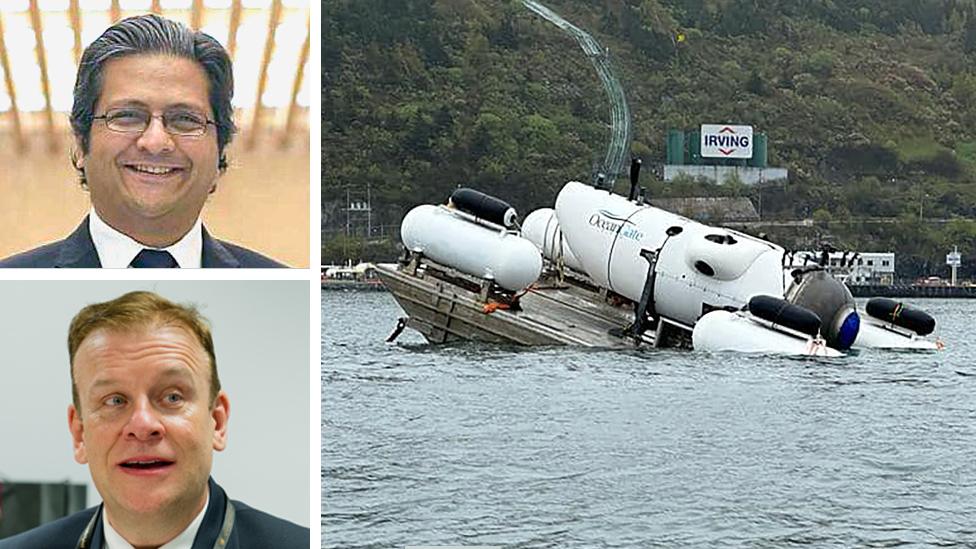
Pakistani businessman Shahzada Dawood and Hamish Harding (on the left)
Titanic's wreck lies some 435 miles (700km) south of St John's, Newfoundland, in Canada, though the rescue mission is being run from the US city of Boston in Massachusetts.
The US Coast Guard said research ships the Polar Prince - which was the support ship on Sunday's tourist expedition - and Deep Energy are continuing to search the ocean's surface.
A Canadian P3 Aurora aircraft is carrying out sonar searches of the area, which as of Tuesday morning was of more than 10,000 sq miles (26,900 sq km), the Coast Guard added.
On Tuesday, France's sea ministry diverted the Atalante, a vessel equipped with a subsea robot, to assist with the search.
Watch: In 2022, the BBC filmed inside the Titan sub with the company's boss Stockton Rush
The missing craft is tour firm OceanGate's Titan submersible, which CBS journalist David Pogue travelled aboard last year to reach the wreckage of the Titanic.
He has told the BBC that when the support ship is directly above the sub, short text messages are able to be sent between the two.
Otherwise, communication via GPS or radio systems is not available as neither work underwater.
Mr Pogue said it was also not possible for those aboard the sub to escape by themselves because they are sealed inside by bolts applied from the outside.
A submersible vessel is different from a submarine. According to the National Oceanic and Atmospheric Administration, a submarine can launch itself into the ocean from a port independently, while a submersible has very limited power reserves so needs a mother ship that can launch it and recover it.
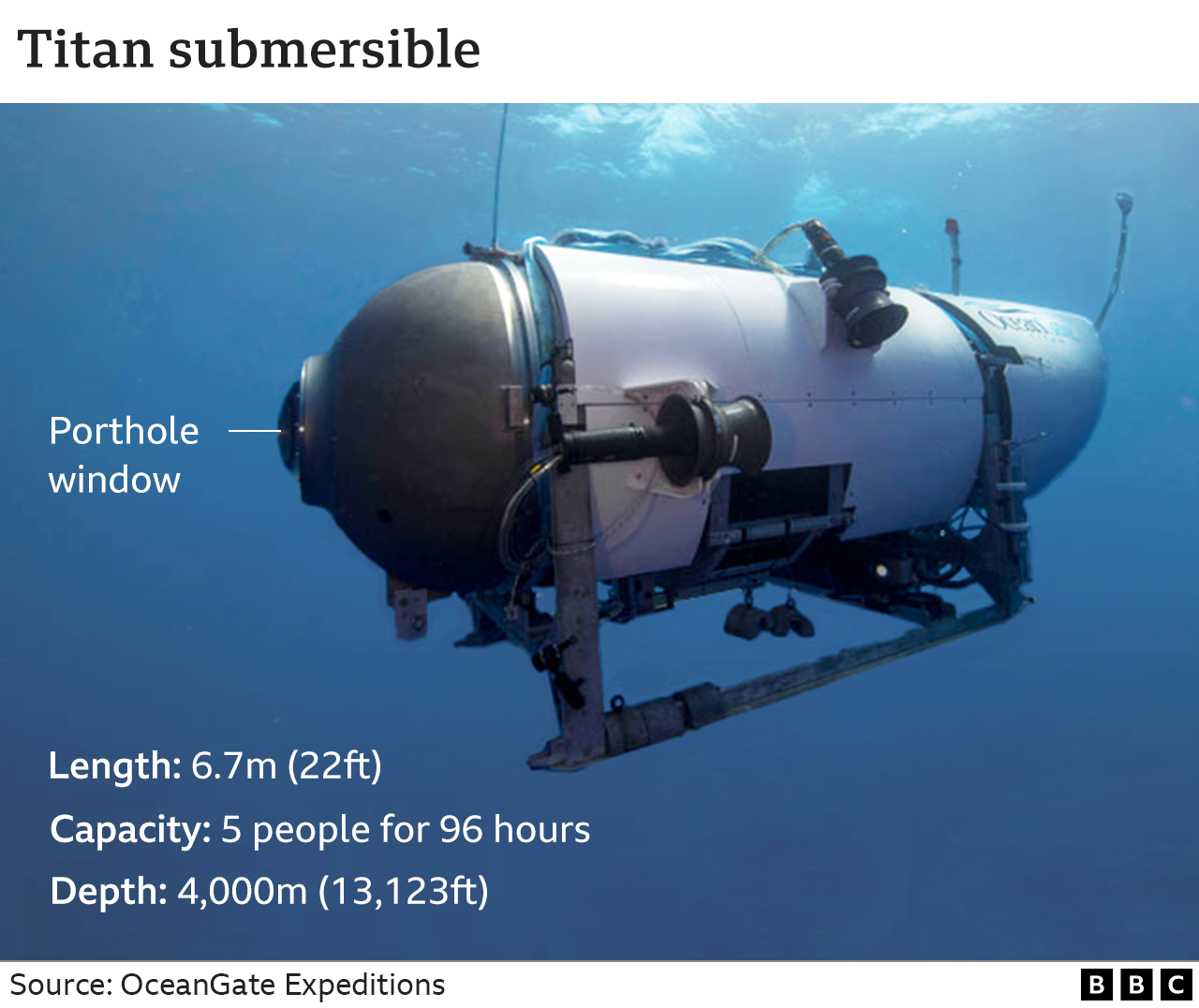
Added to this is the fact that visibility is quickly lost below the surface of the water as light cannot penetrate far.
The OceanGate website lists three submersibles it owns, and only the Titan is capable of diving deep enough to reach the Titanic wreckage.
The vessel weighs 23,000lb (10,432 kg) and, according to the website, can reach depths of up to 13,100ft.
Tickets cost $250,000 (£195,000) for an eight-day trip, including dives to the wreck at a depth of 3,800m.

On social media at the weekend, Mr Harding said because of the "worst winter in Newfoundland in 40 years, this mission is likely to be the first and only manned mission to the Titanic in 2023".
He later wrote: "A weather window has just opened up and we are going to attempt a dive tomorrow."
OceanGate said it had "been unable to establish communications with one of our submersible exploration vehicles", but that its "entire focus [was] on the crew members in the submersible and their families".
"We are deeply thankful for the extensive assistance we have received from several government agencies and deep-sea companies in our efforts to re-establish contact with the submersible," it added.
The company bills the eight-day trip on its carbon-fibre submersible as a "chance to step outside of everyday life and discover something truly extraordinary".
It sets sail from St John's in Newfoundland, with each full dive to the wreck, including the descent and ascent, reportedly taking around eight hours.
According to its website, one expedition is ongoing and two more have been planned for June 2024.
The Titanic, which was the largest ship of its time, hit an iceberg on its maiden voyage from Southampton to New York in 1912. Of the 2,200 passengers and crew on board, more than 1,500 died.
Its wreckage has been extensively explored since it was discovered in 1985.

Do you have information about this story? You can get in touch by emailing haveyoursay@bbc.co.uk, external.
Please include a contact number if you are willing to speak to a BBC journalist. You can also get in touch in the following ways:
WhatsApp: +44 7756 165803
Tweet: @BBC_HaveYourSay, external
Please read our terms & conditions and privacy policy
If you are reading this page and can't see the form you will need to visit the mobile version of the BBC website to submit your question or comment or you can email us at HaveYourSay@bbc.co.uk, external. Please include your name, age and location with any submission.
- Published20 June 2023
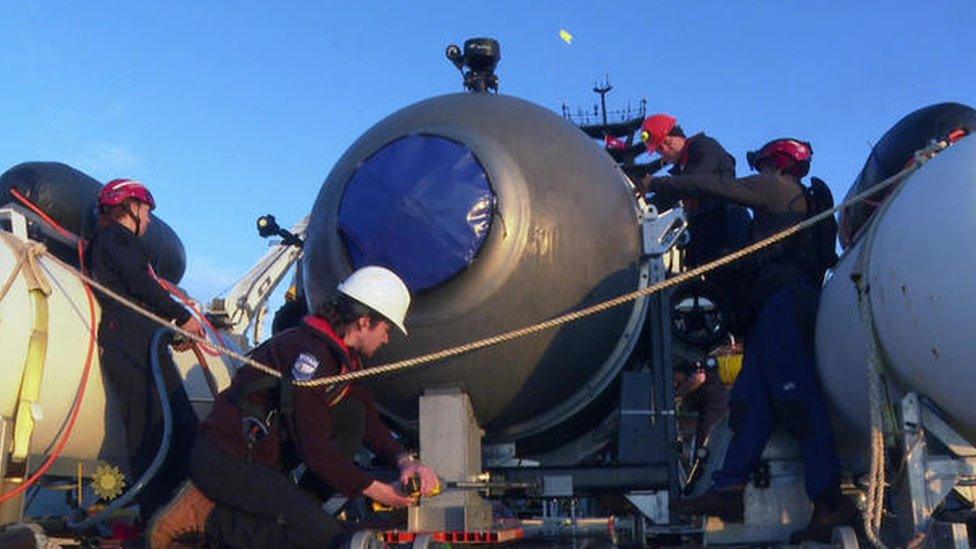
- Published26 June 2023
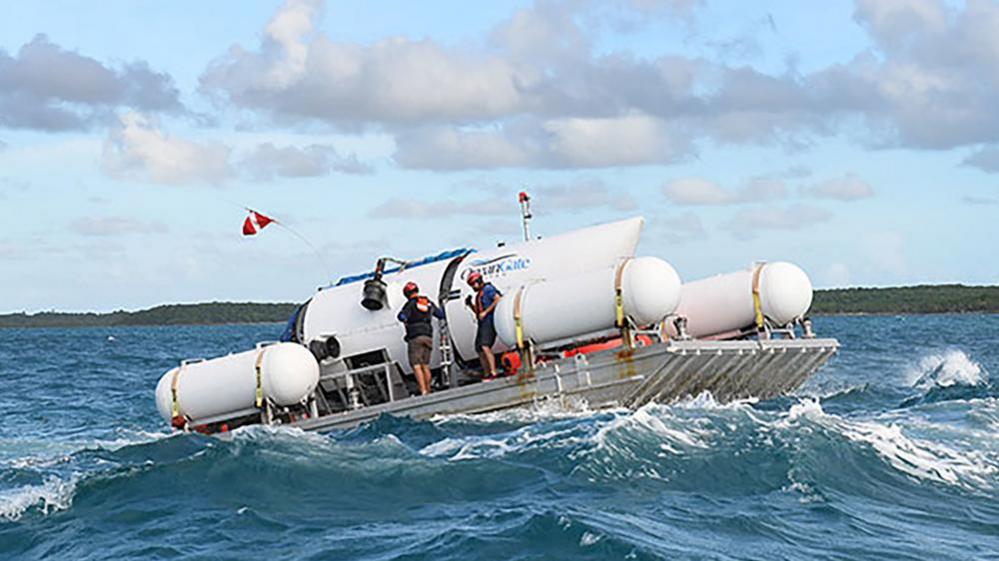
- Published23 June 2023

- Published17 May 2023
